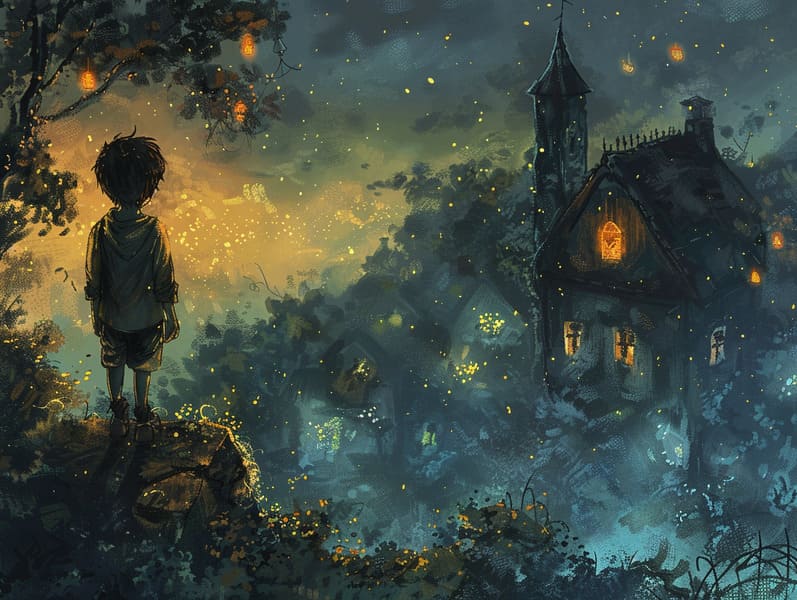The Journey of Mythical Fairy Tales and the Perpetual Charm.
The Journey of Mythical Fairy Tales and the Perpetual Charm.
Blog Article

Old fairy tales have enduring presence. These tales have been transmitted from one generation to the next long before they were ever published. They were born from a variety of societies, including Indigenous traditions. They were initially shared among elders, often carrying themes and messages reflective of the societal norms and beliefs of the time.
The Grimm brothers, the two Grimm brothers, were among the first to collect many of these beloved fairy tales. Their compilation, "Grimm's Folk Tales," included stories like "The True Bride," "Little Brother and Little Sister," and "Snow White," which have since become pillars in the world of beloved fairy tales. Similarly, H. C. Andersen's fantastical fairy tales, such as "The Sea Maid," and "The Duckling's Story," have stolen hearts worldwide, solidifying their place in the pantheon of treasured fairy tales.
Despite being ancient, traditional fairy tales remain as important as ever, especially as kids' bedtime tales. These enchanting tales are now available in diverse formats, including artistically illustrated books, whimsical animations, and online storybooks.
Their enduring popularity can be connected to several enchanting factors:
Significant Morals: Traditional fairy tales often convey important moral lessons. Fairy tales like "The Wolf and the Liar" teach the importance of being truthful, while "The Tortoise and the Hare" illustrate the merits of persistence and unpretentiousness. These stories offer little ones clear distinctions between virtue and vice, developing their moral compass in a tender yet important way.
Compassion and Knowledge: Classic fairy tales frequently feature personalities facing tests and troubles, provoking kids to understand with their struggles and applaud their triumphs. For instance, "The Tale of Beauty and the Beast" teaches us the necessity of seeing inner beauty to perceive the real character of a being, advancing perception and understanding.
Cultural Perception: Many classic fairy tales are interwoven with the cultural contexts from which they originated. Discovering these narratives can provide captivating looks into different social structures, building a sense of cultural appreciation and recognition.
Inventiveness and Fantasy: The fanciful elements in ancient fairy tales—wizardry and magic—generate children’s fantasy worlds. These fairy tales transport readers to fantasy realms, kindling creative ideas and a sense of delight that continues a lifetime.
Old fairy tales are not only charming but also edifying. They serve as fantastical tools in nurturing various intellectual and emotional capacities in children. When timeless fairy tales are read aloud, they improve verbal skills by bringing new terms and meanings and sophisticated sentence structures. This practice also develops hearing perception and attentiveness, as young readers remain attentive, excited to see what happens next.
Furthermore, exploring the themes and characters of timeless fairy tales can foster analytical skills and intellectual skills. Young ones are guided to see patterns, foresee events, and get cause and effect. These deliberations also support the young speak out their thoughts and feelings, cultivating their emotional intelligence.
In today’s online age, the proliferation of internet fairy tales has made these fairy tales more attainable than ever. Internet sites and software give large libraries of classic fairy tales these guys that can be enjoyed or played anytime, anywhere. Fairy tales voiced are particularly popular, supplying an engaging way for little ones to take part in these spellbinding stories. Spoken stories and read-out-loud stories lead characters and settings to life, often supported by charming soundtracks and music that intensify the tale-telling adventure.
The unfading fascination of timeless fairy tales lies in their ability to shift to modern society while keeping hold of their underlying messages. Contemporary reimaginings of these stories often include more representative protagonists and modern settings, making them accessible to today’s audience. However, the core values of boldness, generosity, and righteousness remain unchanged, continuing to resonate with young readers of all ages.
Old fairy tales also offer a sense of familiarity and predictability. They extend a ordered narrative with a evident beginning, middle, and end, often coming to a close with the resolution of conflicts and the triumph of truth over falsehood. This regularity can be soothing for young readers, spreading a sense of invariability in an unpredictable world.
Classic fairy tales continue to spellbind and teach new generations, maintaining their delight and value in modern society. As nighttime stories for kids, they put out a perfect blend of captivation and insight, enhancing moral values, empathy, and creativity. The proliferation of digital fairy tales and the well-received status of fairy tales recited assure that these old stories remain obtainable to new generations.
By holding onto and narrating these stories, we continue to commemorate the rich tapestry of tradition and cultural heritage. Whether you are seeing a colorful picture book, browsing a web collection, or listening to an spoken story, the attraction of ancient fairy tales is always within reach. These tales point out of the enduring ability of tales and its ability to bring us together across eras and regions.
No matter if you are experiencing a colorful picture book, experiencing a online library, or listening via an read-aloud story, the majesty of children's fairy tales is always within reach.
These stories demonstrate of the perpetual effect of tales and its ability to tie us across epochs and places, establishing a link that charms and informs alike.